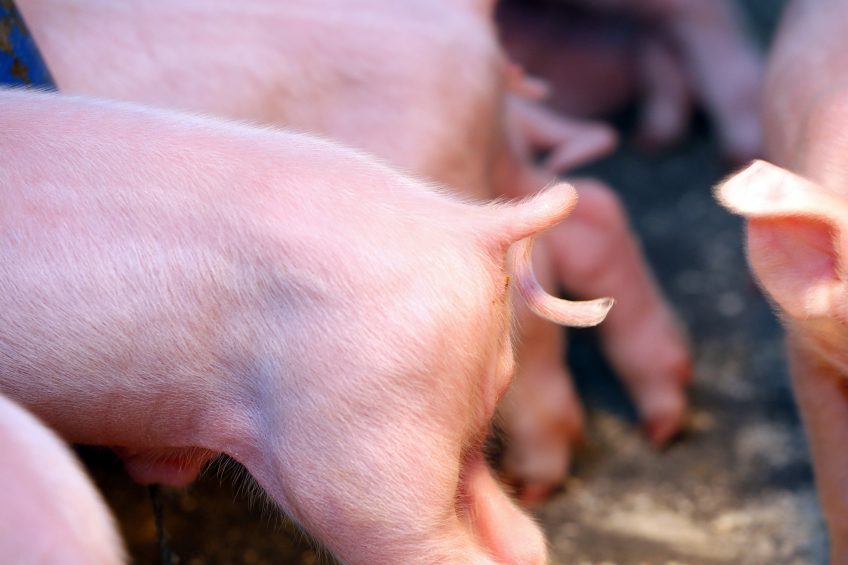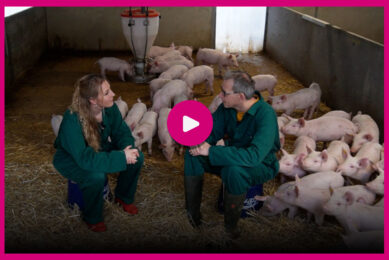Corrected: Pigs feel neuropathic pain due to tail mutilation

Tail mutiliation causes neuropathic pain-like sensations in piglets – that has become clear from recent UK and Danish research.
In their published paper in Nature, researchers from Newcastle University, the Scottish Rural College (SRUC) and Aarhus University concluded: “Tail amputation in pigs appears to evoke acute and sustained changes in peripheral mechanical sensitivity, which resemble features of neuropathic pain reported in humans and other species and provides new information on implications for the welfare of animals subjected to this type of injury.”
Neuropathic pain: pins and needles
To get an idea, Wikipedia defines neuropathic pain as pain with continuous and/or episodic components and include “burning or coldness, ‘pins and needles’ sensations, numbness and itching”.
In personal correspondence to Pig Progress, Dr Di Giminiani explained, “The study described the effects of surgical tail amputation in non-neonatal pigs, which was carried out to mimic an injury like tail biting (i.e. removal of a portion of the tail).”
The researchers felt it was never really well researched what somewhat pigs actually felt. The researchers wrote: “Neuropathic pain refers to pain arising as a direct consequence of a lesion or disease affecting the somatosensory system, and its physiological manifestation has been investigated in rodent models.”
They added that until their publication, it was unknown “if a similar phenomenon occurs in pigs following tail amputation and this is an important question in the current debate on animal welfare issues.”
Exposing pigs to surgical tail resections
To determine the temporal profile of sensitisation, a total of 108 female pigs were exposed to surgical tail resections and mechanical nociceptive thresholds were measured in the acute (one week post-operatively) and in the long-term (either 8 or 16 weeks post-surgery) phase of recovery. The influence of the degree of amputation on mechanical nociceptive thresholds was also evaluated by comparing three different tail-resection treatments (intact, ‘short tail’, ‘long tail’).
Interested in reading more about pig tail research? Last year, Pig Progress interviewed Dr Di Giminiani about his research on tail docking piglets.
A significant reduction in mechanical nociceptive thresholds 1 week following surgery suggests the occurrence of acute sensitisation. Long-term hypersensitivity was also observed in tail-resected pigs at either 2 or 4 months following surgery.
Age at which pigs are exposed
The researchers concluded: “Tail amputation injury in pigs appears to evoke acute as well as sustained changes in peripheral mechanical sensitivity with hyperalgesia observed 1 week and up to several weeks following the surgical procedure. The age at which the animals are exposed to the injury seemingly influences the temporal profile of sensitisation, with younger pigs being affected for a longer period of time.”
Note: In an earlier version of this web article, the word ‘tail docking’ was used incorrectly used instead of ‘mutilation’. The research revolved around a mimic for tail biting and did not investigate the effect of tail docking in neonatals.
The article in Nature was written by Pierpaolo Di Giminiani, Sandra A. Edwards, Emma M. Malcolm and Matthew C. Leach, Newcastle University, UK; Mette S. Herskin, Aarhus University, Denmark and Dale A. Sandercock, Scotland’s Rural College (SRUC), Edinburgh, UK.











